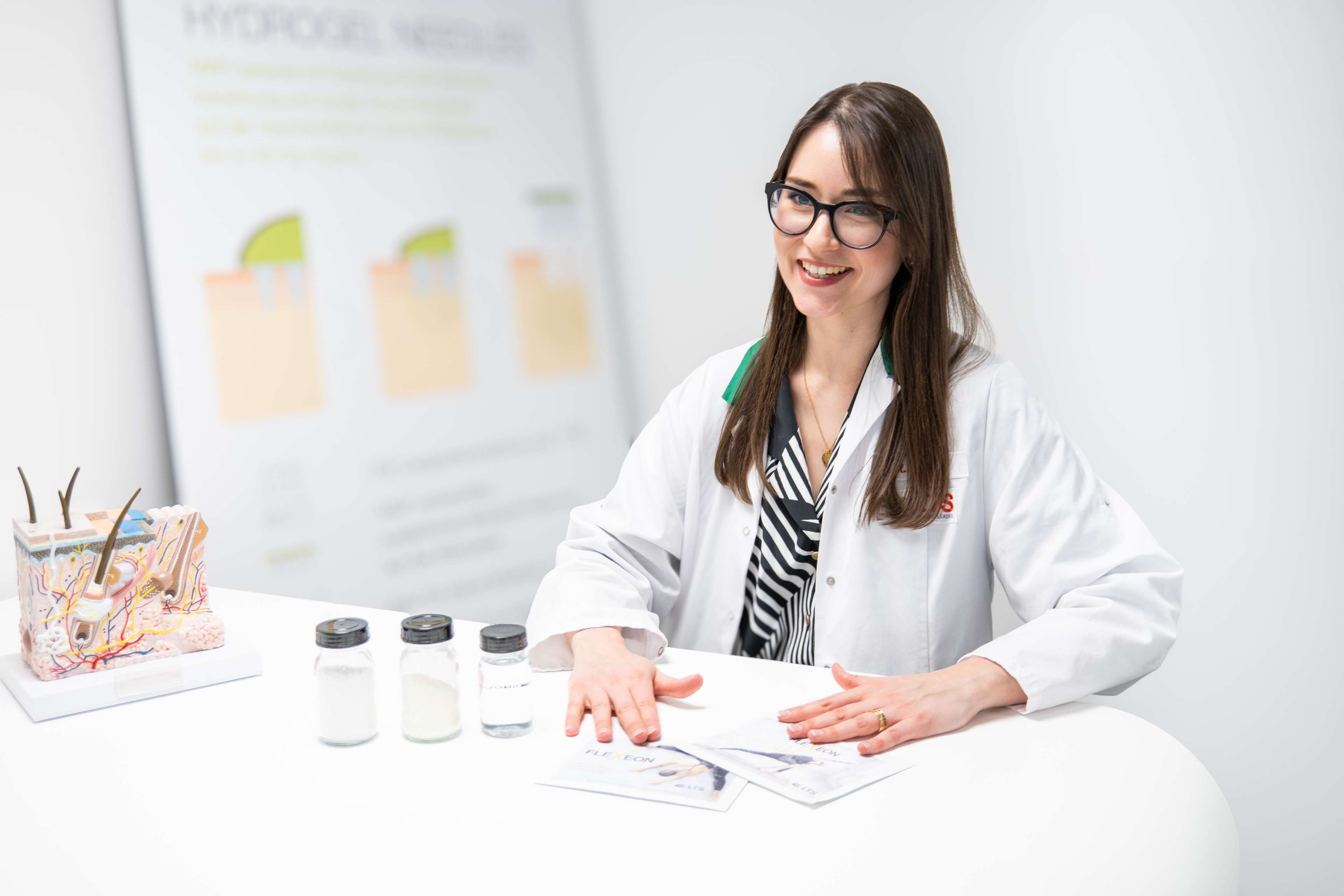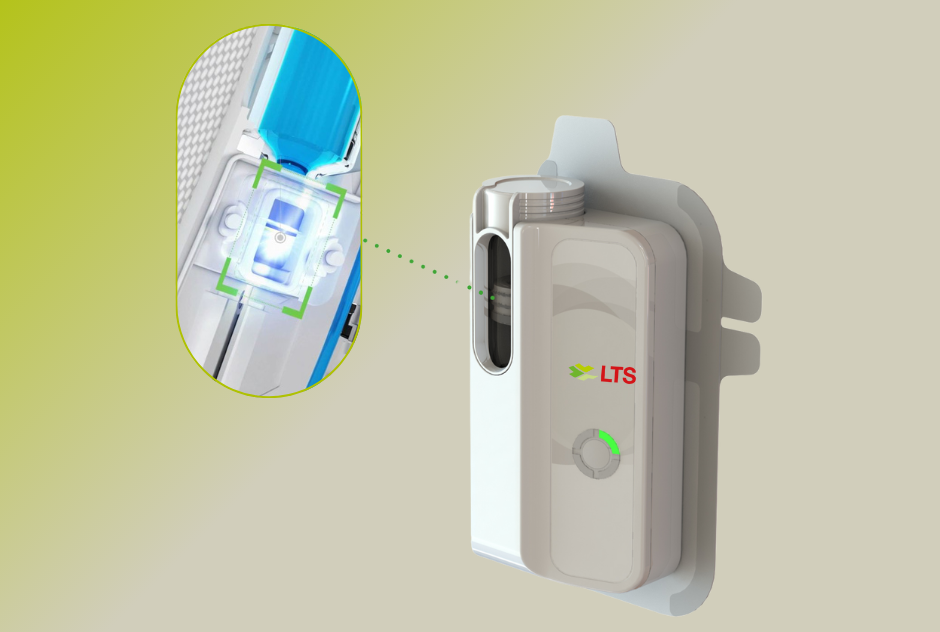
Microarray patches show new promise on path to patient-centric medicine
Dr Frank Theobald, Head of MAP-Program at LTS, reveals how positive trial results, an accelerated API-screening service and continued format innovation are opening the door to new treatment opportunities using microarray patches.
Things don’t tend to move very quickly in the pharmaceutical industry. It’s often a case of evolution rather than revolution and incremental gains rather than out-and-out gamechangers.
And understandably so. It is critical for any medicine or medical device to undergo extensive research, development and testing to fully answer questions regarding viability, patient safety and efficacy. Even for innovations that are potentially transformational, it takes time to evidence that unmet needs are indeed being addressed and the right level of potential exists to enhance patient outcomes in new ways.
This situation is particularly pertinent to us here at LTS. Our microarray patch (MAP) technologies, for example, are still relatively new to the commercial market (less so in research and academic settings), but the results of recent studies have provided very encouraging indications of the role this delivery platform can play in a variety of applications.
Firstly, we have received preliminary read-out results of a Phase 1 Clinical Study for a Hepatitis B antigen. Despite the fact that the formulation contained no adjuvants, the dose delivered via MAP was found to elicit a strong immune response which was superior to the response observed for the currently marketed injectable therapy. The study was designed around a booster vaccination, with a target to double antibodies. Instead, we saw an incredible 14-fold increase with manual application of MAPs. This rose to an astonishing 116-fold increase with the support of an applicator.
The results are significant in many ways. It is potentially very encouraging for dose sparing, for example, which takes on particular significance in pandemic situations where antigens may be in high demand and short supply. At the same time, the MAP treatment was well tolerated – all patients in the study reported no pain and there were no adverse effects.
We are excited to reach out to pharma companies, vaccination specialists and the wider scientific and pharmaceutical community to explore the implication of these results further. We have already attended the Microneedle & Transdermal Drug Delivery Forum in Philadelphia and will be present at the World Vaccine Congress in Barcelona.
Vaccines are, of course, not the only area of focus for MAP technologies. We strongly believe the platform, with its dissolvable properties, has huge potential in the treatment of chronic diseases, such as Multiple Sclerosis, where patients are required to endure multiple, regular treatments via injection over their lifetime. Avoidance of needles would represent a major step forward for patients, leading to enhanced adherence and compliance, and therefore reducing the propensity for costly urgent medical intervention by healthcare professionals.
MAPs are showing encouraging potential in this area. In a separate pre-clinical trial involving the delivery of interferon, there was bioequivalence between the plasma levels observed for the MAP and the dose delivered via injection. These results underline how the MAP platform can be effective for the delivery of biologics, and how it can be developed to support the treatment of life-long conditions through self-administration using a patient-friendly needle-free delivery mechanism.
Such significant findings could be truly life-enhancing and, indeed, the promise of MAPs in the area of biologics has driven continued product innovation at LTS. This can be seen in our next-generation Hydrogel technology, which addresses the limitations that other MAP platforms display in terms of API volumes. Typically, MAPs are unable to accommodate the 30 – 50 milligram doses of protein and peptide-based therapeutic drug formulations that might need to be delivered over a period of days.
With Hydrogel MAP technology, however, there is the same direct penetration of skin via microneedles – with access to deeper layers of the skin and penetration of the blood vessels – but here it is combined with access to a drug reservoir behind the microarray structure. This makes it more comparable to a transdermal delivery system, allowing double-digit milligram amounts of API to be delivered. In turn, this means MAPs can start to be considered for biological treatments that require a higher dose regime than currently possible with dissolvable microneedles.
To help partners accelerate the feasibility of whether their particular API has potential for delivery via MAP, LTS has created a rapid-screening programme. For a comparatively low-level investment, the process will answer questions regarding suitability, such as whether an API is compatible with the polymers used to form the microneedles and whether they result in the structural integrity required to penetrate the skin. In addition, small-scale stability studies highlight any formulation characteristics that might need to be addressed.
This ‘MAP audit’ is all conducted within a timescale of three to four months at a cost of approximately Euro150,000, quickly providing a fast, clear assessment of the technology’s suitability for a given API. Customers are then equipped with the scientific evidence to decide whether to invest further in a co-operative project, opening up the pathway from feasibility to formulation development and, ultimately, commercialisation.
Through this rapid screening of API suitability, our objective is to expand the potential of the MAP platform to a broad range of possible therapy applications. There are opportunities we are currently exploring with partners, for example, in the field of cancer treatment. Here, the results of tumour biopsies are being used to inform the make-up of more personalised MAP treatments. This could involve doses of individual APIs or a combination of different compounds being incorporated into the microneedle tips. Crucially, because the doses can be separated in the MAP, there is no question mark over compatibility.
This is an example of how the MAP platform is dovetailing with medicine’s more patient-centric future. Not only are therapies being designed with the patient in mind, they also have the potential to be delivered via a more patient-friendly drug-delivery system.
As to be expected in our evidence-driven industry, there is still some distance to go before we arrive at this vision but, buoyed by recent MAP trial results, at LTS we are beginning to get a clear view of what’s on the horizon.






